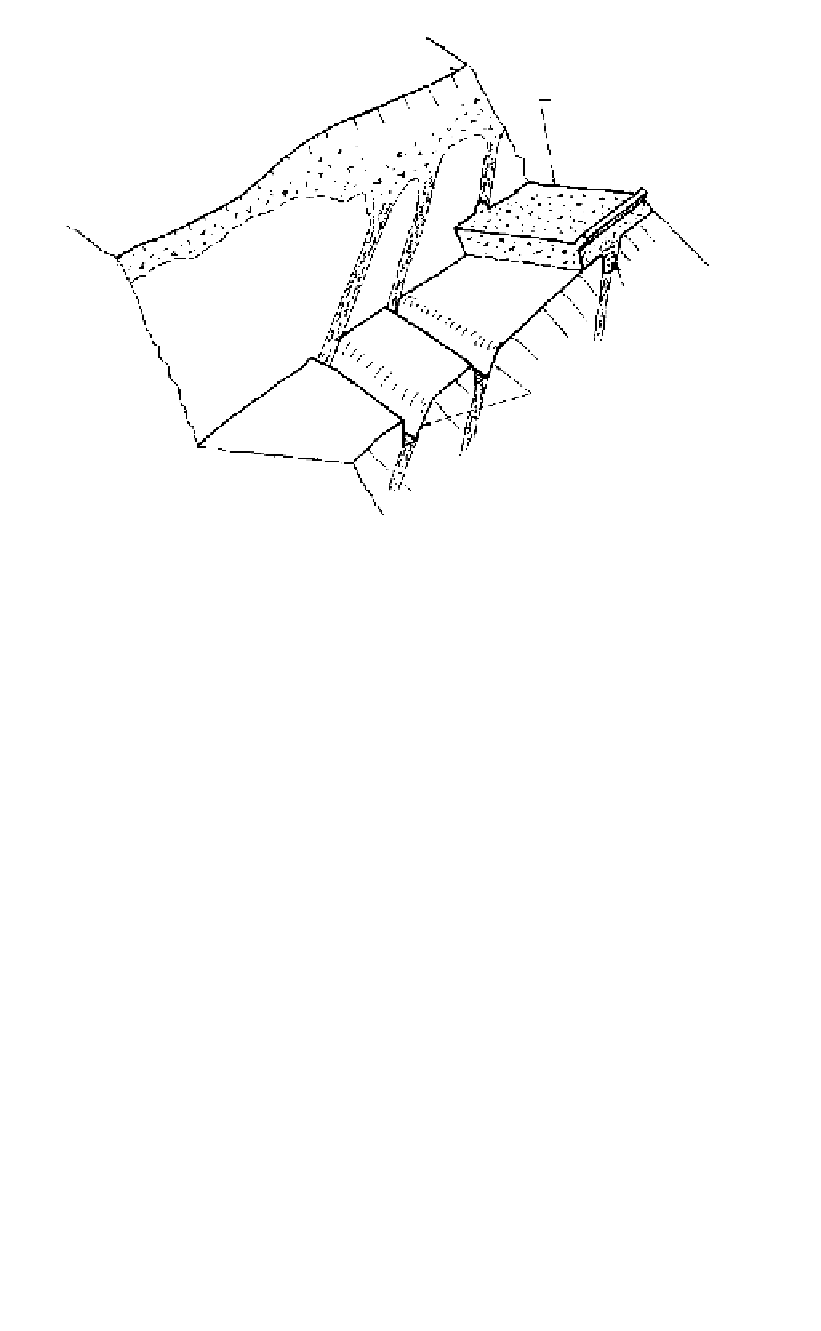Environmental Engineering Reference
In-Depth Information
Top of excavation face
Portion of concrete
grout cap or plinth
“Dentally treated”
seam beneath
plinth
U-shaped slots where seams
have been dug out, these
slots later filled with mortar
or concrete
Figure 17.16.
Dental treatment of weak seams in the plinth foundation of Kangaroo Creek Dam.
(a) Dental concrete. Dental concrete is used to fill irregularities in the foundation due to
joints, bedding, sheared zones, overhangs, or excavated surfaces.
Slabs of dental concrete should have a minimum thickness of 150 mm. Thin areas of
dental concrete over rock projections in a jagged rock surface are likely places for concrete
cracking and should be avoided by using a sufficient thickness of dental concrete or by
avoiding continuous slabs of concrete over areas containing numerous irregularities.
Feathering at the end of slabs should not be permitted, and the edges of slabs should be
sloped no flatter than 45°. When formed dental concrete is required, it should not be
placed at slopes greater than 0.5:1 (H:V), as discussed in Section 17.6.1.
When fillets of dental concrete are placed against vertical or near vertical surfaces,
feathering should not be permitted, and a bevelled surface with a minimum thickness
of 150 mm will be required at the top of the fillet.
The mix proportions should provide a strength at 28 days of 20 MPa. The maxi-
mum aggregate size should not be larger than one-third the depth of slabs or one-fifth
the narrowest dimension between the side of a form and the rock surface.
Aggregate and water shall be of quality equal to that required in concrete specifica-
tions allowing for sulphates in the foundation materials and groundwater. To ensure a
bond between the concrete and the rock surface, the rock surface should be thoroughly
cleaned and moistened prior to concrete placement. When overhangs are filled with
dental concrete, it is essential that the concrete is well bonded to the upper surface of
the overhang. Before concrete placement, the overhang should be shaped to allow air
to escape during concrete placement and thus prevent air pockets between the con-
crete and the upper surface of the overhang. The concrete must be placed and allowed
to set with the head of the concrete higher than the upper surface of the overhang. In
cases where the preceding measures are not feasible, grout pipes should be inserted
through the dental concrete to fill potential air voids. If grouting behind dental con-
crete is employed, grouting pressures should be closely controlled to ensure that jack-
ing of the concrete does not occur.

